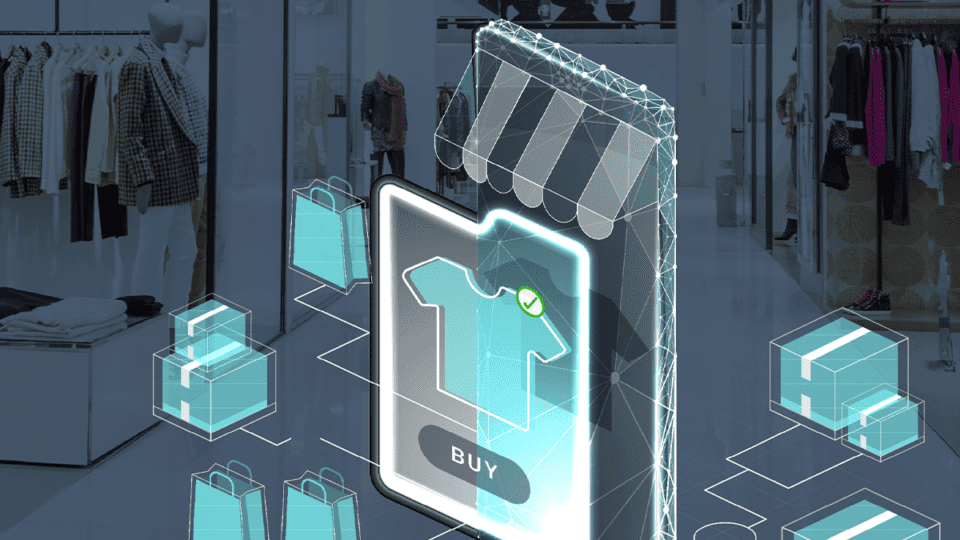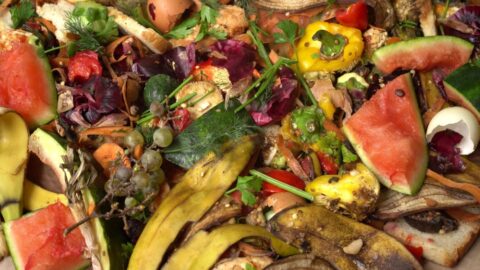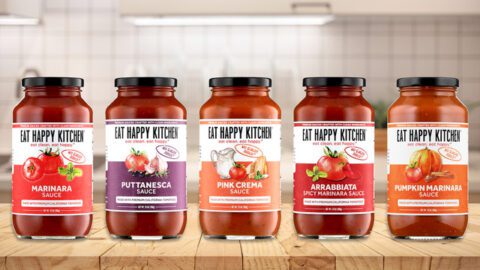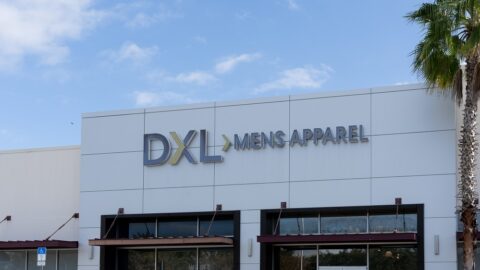Marketplaces have been a dominant force in online retail for some time now, with early mover Amazon still leading the pack. Now, an increasing number of other retailers are seeing the value in adding a marketplace to their commerce offerings. As a result, third-party marketplaces are expected to be the fastest-growing retail channel globally over the next five years, with Edge by Ascential forecasting that third-party sales through marketplaces will add $1.3 trillion dollars and account for 59% of all global ecommerce by 2027.
“It’s probably twofold why [marketplaces are] starting to explode,” said Richard Hankin, a former eBay executive who is now SVP of Go-to-Market, North America at marketplace SaaS solution Marketplacer. “One, retailers are in a position to do it now; they’ve got a big population of eyeballs coming to their site, which is an asset they can leverage. Secondly, the technology exists to do it, whereas five years ago it really didn’t. I mean Walmart did it because they’ve got something like 5,000 engineers so they can build it themselves, but for other businesses it’s not worth the time and effort to build this technology in-house and maintain it — that’s expensive and slow. I see it as a bit of a perfect storm.”
In fact, the move has become so popular that the number of third-party marketplaces operating globally has increased by more than 500% since 2007. With big names like Macy’s, Albertsons, Bed Bath & Beyond, Michaels and 1-800-Flowers.com entering the mix in 2022 alone, one begins to wonder whether we’ll soon reach a saturation point for marketplaces — but Hankin doesn’t think so.
“The answer is, absolutely not — I mean only to the point where there are too many retailers in a space, and that exists now if your vertical is saturated,” he said in an interview with Retail TouchPoints. “As much as there might be more operators [a.k.a. retailers] taking on this strategy, each week and each month there are more sellers that adopt this too. Is the market saturated for mega-marketplaces with more than a million products and hundreds of categories like an eBay or Amazon? Absolutely. But for retailers that are looking to dominate and be a destination in what they do, it can only be saturated to the point where there’s too many retailers in that space.”
In fact, there are three retail areas in particular — wholesale, off-price and grocery — where the marketplace opportunity is still wide open, primarily because each faces unique digitalization challenges that have slowed their move online.
Marketplace White Space #1: Wholesale
Wholesale has been the lifeblood of retail for centuries, and that legacy may be part of the problem: modernization is sometimes actually harder for established institutions than for newer organizations building from a modern starting point. This is particularly true of the wholesale sector, which often is based in other parts of the world, where digitization and ecommerce have evolved more slowly, or in different ways, than in the West.
Aditi Pany, an Indian native who helped to launch one of India’s largest fashion ecommerce sites, saw the opportunity and jumped on it. “I had been at the heart of the digitization in the B2C space, but hadn’t seen it in B2B, [where] there was a clear white space,” she said in an interview with Retail TouchPoints. “[And] with all this digitization, there are so many more small- and medium-sized merchants around the world that need to source to sell. I saw an opportunity to build a platform that makes it easy for buyers around the world to access more responsibly produced products and gives [them] access to global markets in a more efficient way.”
The platform she founded, Qalara, is a cross-border B2B marketplace that connects Indian and Southeast Asian artisans, producers and manufacturers with buyers around the world.
In many cases, once these online marketplaces are developed they actually become a catalyst for the broader digitization of local producers and sellers in markets around the world. That was the goal of AB InBev’s new BEES marketplace. Launched in 2019 by the brewing company (owner of brands like Budweiser, Stella Artois and Corona), BEES was designed to help AB InBev’s smaller retailers digitize at the same speed as its larger ones, according to Melissa Minkow, Director of Retail Strategy at digital transformation consultancy CI&T, which helped the company with the project.
“We started first in the Dominican Republic, and the reason we started there was because the retailers there deal with wholesalers in a much less technological way than in other countries,” explained Minkow in an interview with Retail TouchPoints. “Sometimes they’ll be literally messaging through WhatsApp asking about available inventory and purchasing. We realized there was a real opportunity to streamline — it is a huge white space.”
Through BEES these retailers now have real-time inventory visibility and also can connect with all their regional wholesalers in one unified experience, easily re-order online, and track and manage their orders and deliveries.
Marketplace White Space #2: Off-Price
Off-price and outlet offerings have proven to be particularly hard to bring online, not just because of the single- or limited-SKU nature of these retailers’ merchandising, but also because the off-price segment isn’t always a priority for brands.
Just ask Century 21, which filed for bankruptcy in 2020. The store is readying for its comeback (in its original downtown New York City location) with ecommerce as a central piece of the mix. When the new store opens in spring 2023, it will be accompanied by an “elevated” ecommerce offering supported by logistics provider Fillogic, to ensure that “Century 21 is able to meet the modern customer’s expectations,” according to a company statement.
Ecommerce juggernaut Rue Gilt Groupe (RGG), also has its sights set on shaking things up in the online world of off-price through its new joint venture with mall operator Simon — a marketplace called Shop Premium Outlets (SPO).
“The online value shopping market is a massive opportunity ready for the next disruptor,” said Michael Rubin, Executive Chairman of RGG in a statement at the time of the deal. “This transaction brings together the leaders in online and physical commerce to deliver the excitement of outlet shopping online to consumers and innovative solutions to our brand partners.”
The “multi-platform venture dedicated to digital value shopping” features a marketplace built on the Mirakl platform, with a unified shopping cart that allows shoppers to buy directly from nearly 250 outlet brands in one place. SPO also is tapping into livestreaming as a low-lift way to “unlock” outlet mall inventory, in partnership with Alibaba Group’s Tmall Global platform.
Marketplace White Space #3: Grocery
Consumers were slow to adopt online grocery shopping, as one might expect in a category where many of the products are fresh and quality is highly subjective, but the pandemic changed all that. Ordering groceries online became a common practice during lockdowns, and many consumers haven’t looked back since.
With the rapid uptick in online grocery shopping — and given that grocery is already a low-margin business — many grocers are looking for ways to make ecommerce work financially, so it should come as no surprise that marketplaces are increasingly popular in this category. Marketplaces offer the benefits of an expanded selection, without the risk and cost of holding and shipping inventory.
In fact, Edge by Ascential predicts that edible grocery will be the fastest-growing category for third-party online sales between 2022-2027, with a compound annual growth rate (CAGR) of 11%.
Albertsons is diving back into the marketplace waters after its first failed attempt at a marketplace back in 2018. That history doesn’t intimidate the company’s Senior Director of Marketplaces, Jasmin Krdzalic, though.
“[In my career] I always look for opportunities that are not already won,” he said in a session at the Retail Innovation Conference and Expo earlier this year. “Amazon has conquered the world of logistics, they’ve conquered online shopping, they’ve conquered the world of selection — the one area they haven’t conquered, nobody has, is online grocery. And what is bought more often than grocery? Nothing. Food is omnipresent in our lives, and yet not all the food that I care about is available in one place. [So how does Albertsons become] a one-stop shop for all our customers’ food needs and become a food authority? A marketplace may be the way to get there.”
According to Krdzalic, Albertsons plans to use its upcoming marketplace to expand into trending and underserved food categories, as well as identify gaps in its current store inventory.
Fellow grocer Giant Foods is taking a different tack, using its marketplace to expand beyond food. Launched in partnership with Ship2Me, the Giant Food marketplace features categories that complement the retailer’s primary offerings, including health and beauty, home décor, seasonal items, kitchen and dining, outdoor, pets and premium pantry products.
Costco also has taken a unique approach with its marketplace Costco Next, which features a curated selection of limited-supply items that shoppers can purchase directly from the retailer’s “most trusted suppliers.” The marketplace is arranged by supplier to let shoppers pick and choose the specific brands that interest them, though users can still shop by product category if they prefer.
One thing’s for sure when it comes to the world of marketplaces — while there are certainly many more players than even a year ago, there is also still plenty of opportunity. The key, according to Hankin, is knowing up front what you want a marketplace to do for you. “A lot of retailers or business get stuck on the question, Do I want to be a marketplace?” he said. “This is about adding product range to your site; it’s not a characterization [of who you are as a business]. This is about adding more product in a different financial relationship with a supplier or a seller.”
Want to dive deeper into the marketplace opportunity? Check out our free special report: Ask (and Answer) These Three Questions Before Launching a Third-Party Marketplace.













